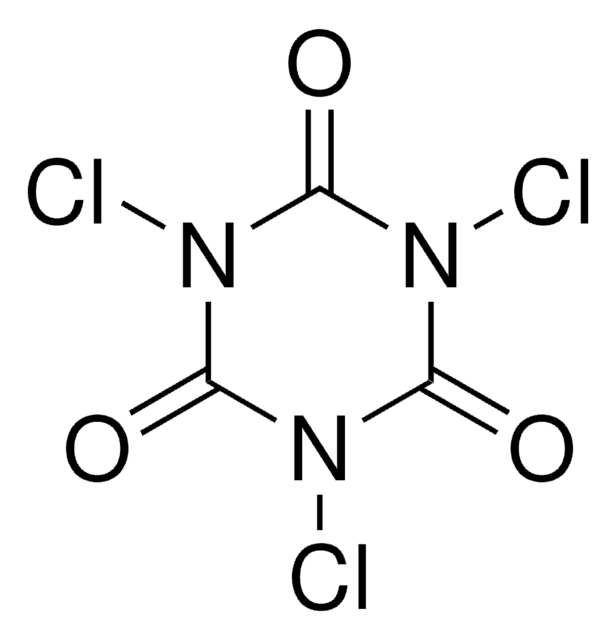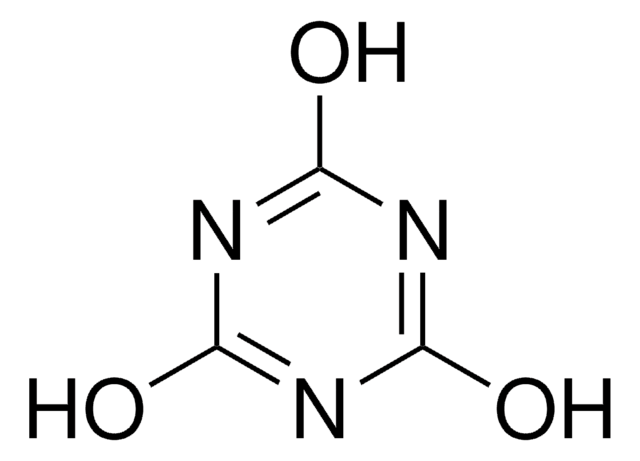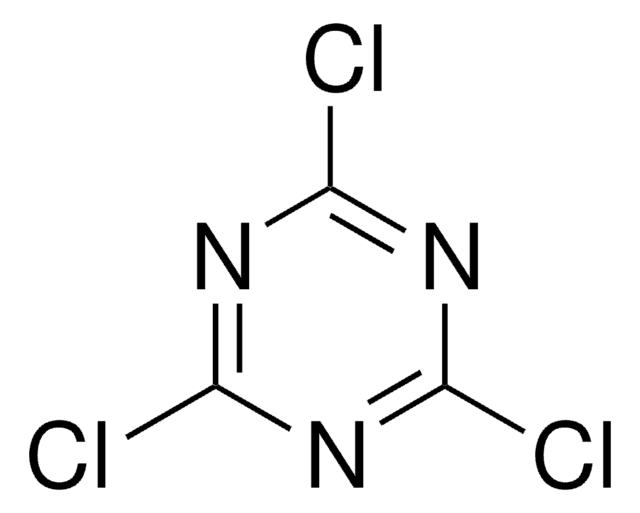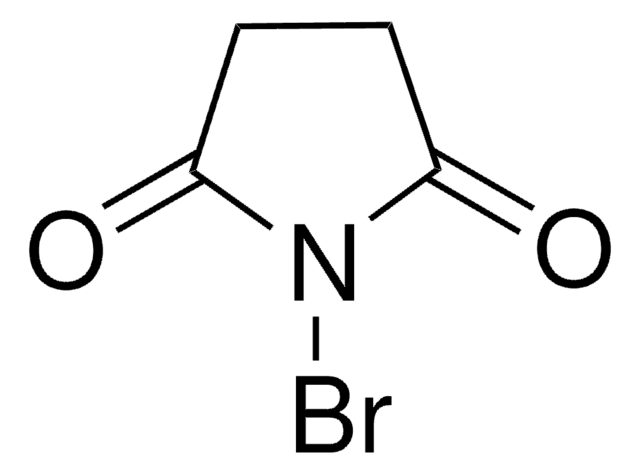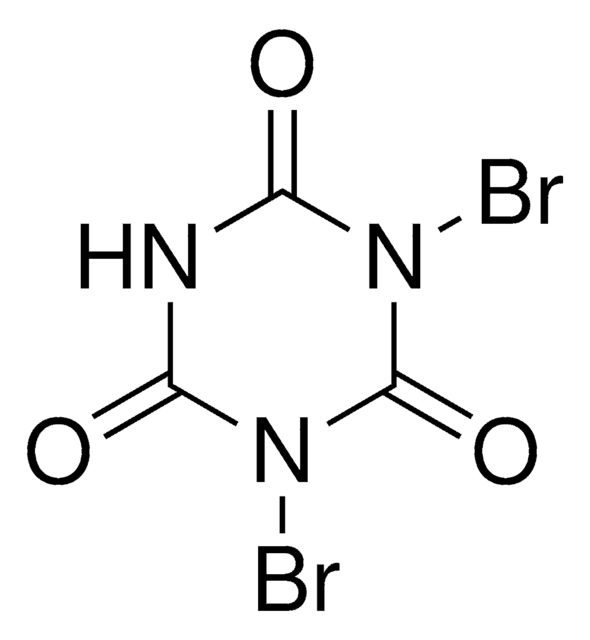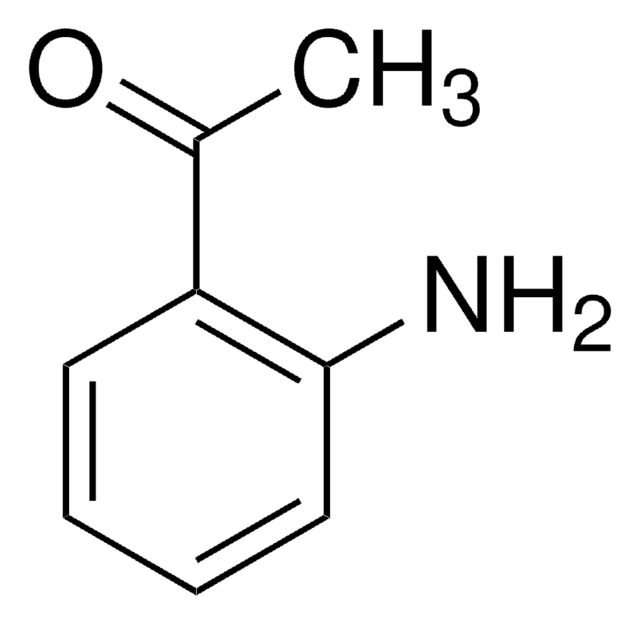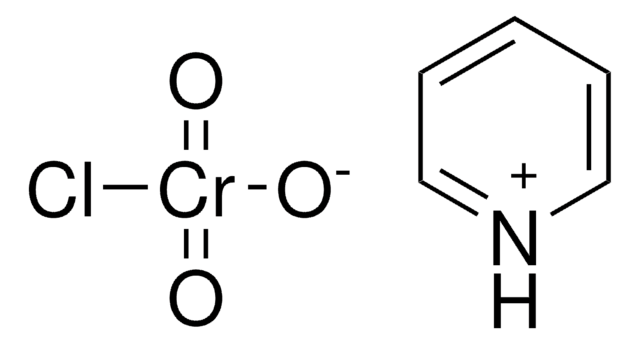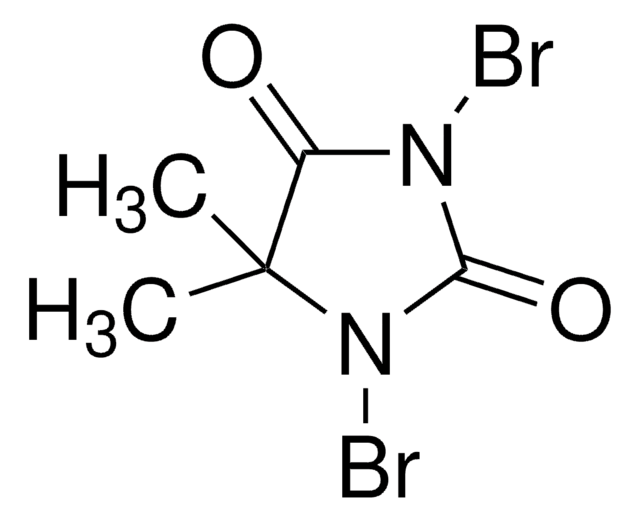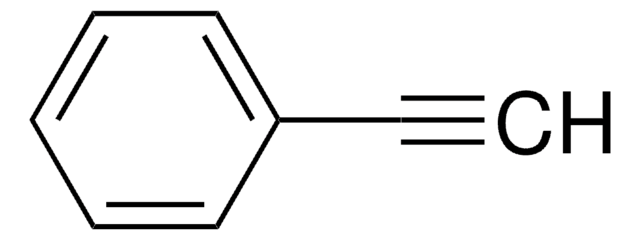8.08607
Trichloroisocyanuric acid
for synthesis
Synonim(y):
Trichloroisocyanuric acid, 1,3,5-Trichlorohexahydro-1,3,5-triazine-2,4,6-trione, 1,3,5-Trichloro-1,3,5-triazine-2,4,6-trione, TCCA, Bleaching solution
About This Item
Polecane produkty
Poziom jakości
Formularz
crystals
siła działania
406 mg/kg LD50, oral (Rat)
>2000 mg/kg LD50, skin (Rabbit)
pH
2.0-2.7 (20 °C, 10 g/L in H2O)
mp
225-230 °C (decomposition)
temp. przejścia
flash point >250 °C
gęstość
2.07 g/cm3
gęstość nasypowa
850 kg/m3
temp. przechowywania
2-30°C
InChI
1S/C3Cl3N3O3/c4-7-1(10)8(5)3(12)9(6)2(7)11
Klucz InChI
YRIZYWQGELRKNT-UHFFFAOYSA-N
Zastosowanie
- Catalyst- and metal-free C(sp2)–H bond selenylation of (N-hetero)-arenes using diselenides and trichloroisocyanuric acid at room temperature: An eco-friendly approach for the C(sp2)–H bond selenylation of imidazopyridines and other N-heteroarenes as well as simple arenes at ambient temperatures (JSS Neto et al., 2023).
- Organic impurity profiling of 3, 4-methylenedioxyamphetamine (MDA) synthesised from helional: This paper explores the use of trichloroisocyanuric acid in the oxidative rearrangement reaction for synthesizing MDA, presenting an alternative oxidizing agent approach (AL Mercieca et al., 2023).
- Convenient synthesis of 2-chloro-3-substituted quinoxalines by visible-light-induced radical cascade cyclization of ortho-diisocyanoarenes with sulfinic acids: This research discusses the use of trichloroisocyanuric acid as a Cl-source in visible-light-induced reactions, enhancing the synthesis process (P Natarajan et al., 2024).
- Synergy between UV light and trichloroisocyanuric acid on methylisothiazolinone degradation: The study presents an advanced oxidation process using ultraviolet and trichloroisocyanuric acid for the degradation of MIT, detailing performance, kinetics, and pathways (Z Chai et al., 2023).
Komentarz do analizy
Identity (IR): passes test
Hasło ostrzegawcze
Danger
Zwroty wskazujące rodzaj zagrożenia
Zwroty wskazujące środki ostrożności
Klasyfikacja zagrożeń
Acute Tox. 4 Oral - Aquatic Acute 1 - Aquatic Chronic 1 - Eye Irrit. 2 - Ox. Sol. 2 - STOT SE 3
Organy docelowe
Respiratory system
Zagrożenia dodatkowe
Kod klasy składowania
5.1B - Oxidizing hazardous materials
Klasa zagrożenia wodnego (WGK)
WGK 2
Certyfikaty analizy (CoA)
Poszukaj Certyfikaty analizy (CoA), wpisując numer partii/serii produktów. Numery serii i partii można znaleźć na etykiecie produktu po słowach „seria” lub „partia”.
Masz już ten produkt?
Dokumenty związane z niedawno zakupionymi produktami zostały zamieszczone w Bibliotece dokumentów.
Klienci oglądali również te produkty
Nasz zespół naukowców ma doświadczenie we wszystkich obszarach badań, w tym w naukach przyrodniczych, materiałoznawstwie, syntezie chemicznej, chromatografii, analityce i wielu innych dziedzinach.
Skontaktuj się z zespołem ds. pomocy technicznej